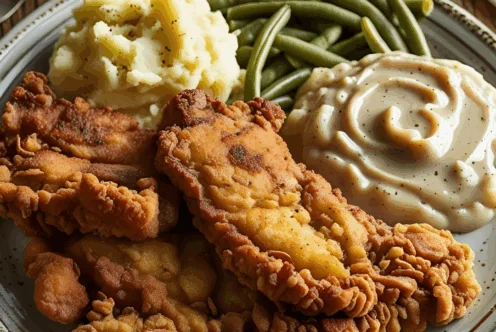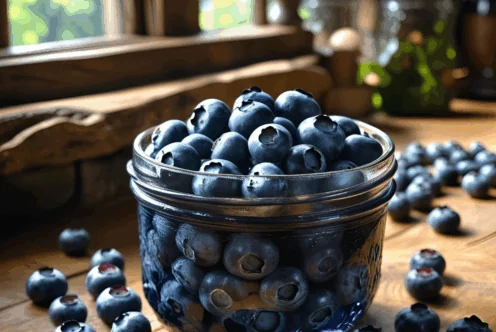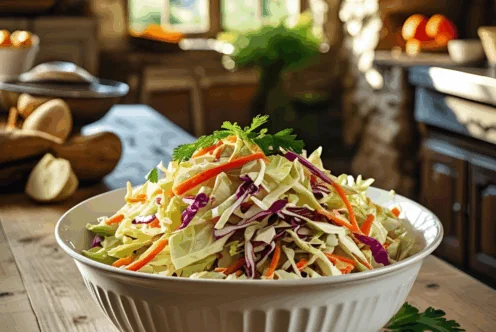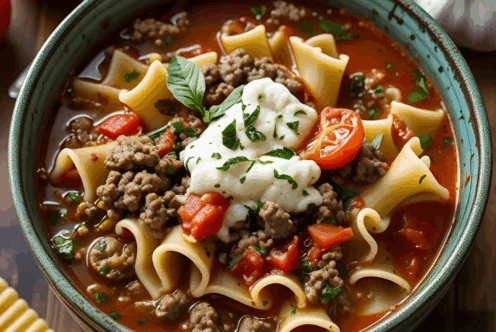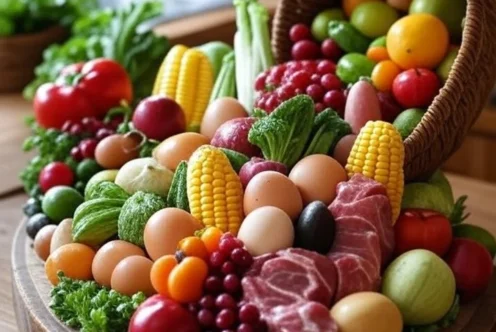Blog
Gluten Free Flour Options!

Navigating the world of gluten-free baking can feel overwhelming, especially if you’re new to it. However, with the right knowledge and resources, it can transform into an enjoyable and rewarding experience. Whether you’re gluten intolerant or simply experimenting with gluten-free recipes, discovering the various flour options can make a world of difference in your baking endeavors. My mom and I have gone on our own journey of experimenting with different types of gluten-free flours, and we’re excited to share our findings with you!
Understanding Gluten-Free Flours
Gluten is a protein found in wheat, rye, and barley. For those who are gluten intolerant or have celiac disease, consuming gluten can lead to serious health issues. Fortunately, there are numerous gluten-free flour alternatives available that can be used in a variety of recipes, from breads and cakes to sauces and batters. Each type of flour brings its own unique flavor and texture, making it essential to choose the right one for your specific dishes.
My Favorite Gluten-Free Flour Options
Here’s a list of gluten-free flour options that have worked well for my mom and me in our baking adventures:
Almond Flour
- Almond flour is made from finely ground almonds, offering a nutty flavor and moist texture. It’s rich in healthy fats, protein, and fiber, making it not just a gluten-free option but also a nutritious one. It works well in cakes, cookies, and pancakes. One useful tip is to substitute regular flour with almond flour in a 1:1 ratio, but keep in mind it may require additional eggs for binding. Learn more about almond flour here.
Coconut Flour
- Coconut flour is another popular gluten-free option that has a distinct coconut flavor. It’s incredibly absorbent, so you’ll need to use less of it compared to other flours (typically about 1/4 to 1/3 the amount) and increase the liquid in your recipes. It’s best for pancakes, muffins, and quick breads. This flour is also lower in carbohydrates and high in fiber. Discover more about coconut flour benefits.
Oat Flour
- Oat flour is made by grinding whole oats into a fine powder. It lends a mild, slightly sweet flavor to baked goods. It’s ideal for cookies, pancakes, and breads. It’s crucial to ensure that you choose certified gluten-free oats to avoid cross-contamination. Check out the benefits of oat flour.
Brown Rice Flour
- Brown rice flour is made from whole grain brown rice. It has a mild flavor and is a staple in many gluten-free baking recipes. It’s great for thickening sauces and batters and works well for pancakes, flour blends, and bread. Learn more about brown rice flour’s nutritional profile.
Cassava Flour
- Derived from the cassava root, cassava flour has a neutral flavor and is a fantastic substitute for wheat flour in recipes. It can be used as a 1:1 replacement for standard flour. It’s particularly useful for making tortillas, breads, and cakes. See the versatility of cassava flour.
Tapioca Flour
- Tapioca flour, made from the cassava root, is a starchy flour ideal for adding chewiness to baked goods. It’s often used in combination with other flours to enhance texture. It’s awesome for thickening soups and sauces too. Learn more about tapioca flour used in cooking.
Chickpea Flour
- Also known as besan or gram flour, chickpea flour is high in protein and has a nutty flavor. It’s excellent for savory recipes and works particularly well in fritters and flatbreads. It’s also a common ingredient in Indian cuisine. Check out dishes made with chickpea flour.
White Rice Flour
- White rice flour is a fine flour that has a mild flavor, making it a versatile option in gluten-free baking. It’s commonly used in recipes requiring a light texture or as a thickening agent. You can use it in combination with other flours for better results. Learn more about white rice flour here.
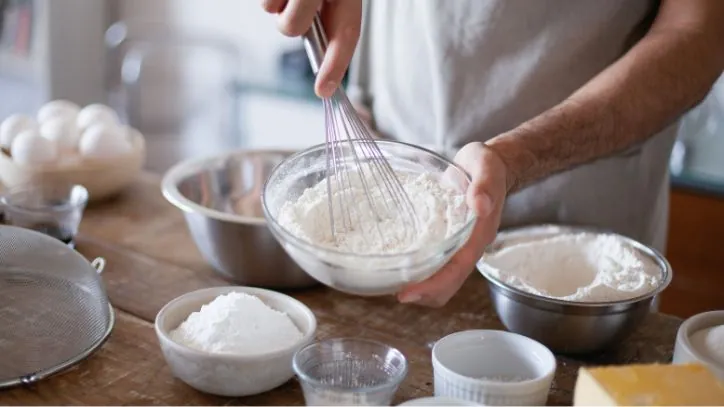
Other Gluten-Free Flour Options
In addition to the flours mentioned above, there are several other gluten-free flours available for experimentation:
- Buckwheat Flour – Despite its name, buckwheat is gluten-free and has a nutty flavor that works well in pancakes and noodles. Learn more about buckwheat flour.
- Amaranth Flour – Amaranth is a hearty ancient grain that provides a unique taste and texture in baked goods. It’s rich in vitamins and works well in bread and muffins. Discover the health benefits of amaranth.
- Teff Flour – Teff flour is derived from the tiny teff grain and is a staple in Ethiopian cuisine, especially in making injera. It has a slightly sweet, molasses-like flavor and is rich in protein and iron. Check out more about teff flour.
- Sorghum Flour – Sorghum flour is a mild-flavored grain that is often blended with other gluten-free flours. It can add sweetness to baked goods and is great for muffins and pancakes. Learn more about sorghum flour’s uses and benefits.
- Corn Flour – Corn flour has a fine texture and sweet flavor. It can be used in a variety of baked goods but is often combined with other flours for best results. It is particularly favored in Southern cooking for cornbread and muffins. Discover the differences between cornmeal and corn flour.
Mixing and Matching
From our experience, blending different types of gluten-free flours often yields the best results. Each flour has its unique properties, and combining them can help mimic the texture and flavor of traditional wheat flour. For instance, a blend of almond and oat flour can provide a moist and flavorful backdrop for cookies, while a combination of brown rice and tapioca flour may create the perfect dough for bread.
Many recipes will provide guidance on the appropriate ratios for mixing flours. Additionally, pre-made gluten-free flour blends are available in stores, which can be a time-saver and sometimes a bit easier for those new to gluten-free baking. These blends usually treat all gluten-free flours equally and can often be substituted directly for all-purpose flour at a 1:1 ratio. However, they may work best in specific recipes, so check for guidance.
Beyond Baking
Gluten-free flours don’t just shine in baked goods. You can use them for various other culinary applications:
- Breading: Use almond or chickpea flour instead of traditional breadcrumbs for chicken or vegetable breading. They can add a crunchy texture without the gluten.
- Thickening Agents: Flours like tapioca and cornstarch are excellent for thickening soups, sauces, and gravies. Just remember to mix them with a little cold liquid first to avoid lumps.
- Smoothies: A tablespoon of coconut or almond flour can give your smoothies added nutrition and thickness without gluten.
- Pasta: Experimenting with chickpea or brown rice flour can open up new pasta-making adventures. Just be aware that gluten-free pasta often has a different cooking time and texture.
Tips for Successful Gluten-Free Baking
Baking gluten-free can be an adjustment, but with a little know-how, anyone can create delicious treats!
- Understand Your Flours: Each gluten-free flour behaves differently, so learning how each one interacts in a recipe is crucial. Experiment to find the perfect blends that work for you.
- Use Binders: Gluten provides elasticity to baked goods, which gluten-free flours often lack. Consider adding binders like xanthan gum or psyllium husk to help improve texture, especially in breads and cakes.
- Add Moisture: Gluten-free flours can lead to drier outcomes. Incorporating ingredients like applesauce, yogurt, or additional eggs can help retain moisture.
- Experiment with Ratios: Don’t hesitate to adjust flour ratios in recipes according to your preferences. What works for one recipe may not work for another.
- Test for Doneness: Since gluten-free baked goods can sometimes brown more quickly, use a toothpick to check for doneness and avoid overbaking.
The Joy of Gluten-Free Baking
While gluten-free baking might seem intimidating at first, it’s an enjoyable experience that encourages creativity in the kitchen. Armed with a variety of gluten-free flours, you can explore countless baking options without sacrificing flavor or texture. Each baking session is an opportunity to try something new and share those delicious creations with family and friends.
As you embark on your gluten-free baking journey, remember to embrace the process. Take some time to experiment, adjust, and perfect your recipes. Don’t forget to look for inspiration in books and blogs, and don’t shy away from trying out different combinations of flours.
For more health-related articles, or for more recipes, check out the Fill Your Plate blog!
Happy baking!
By Heide Kennedy, Arizona Farm Bureau Communications Intern













